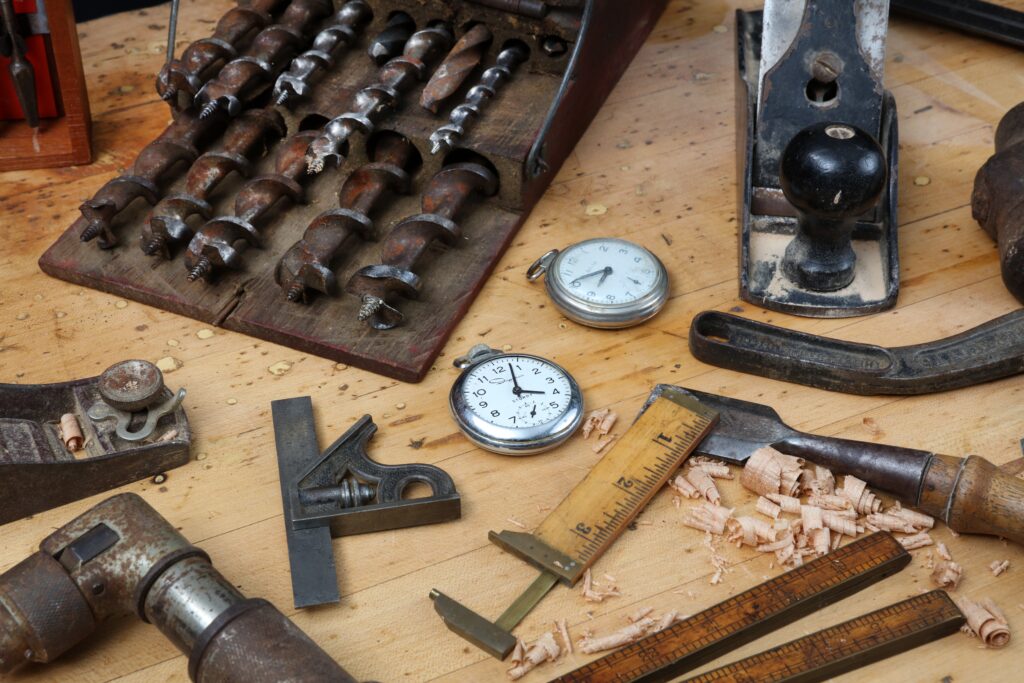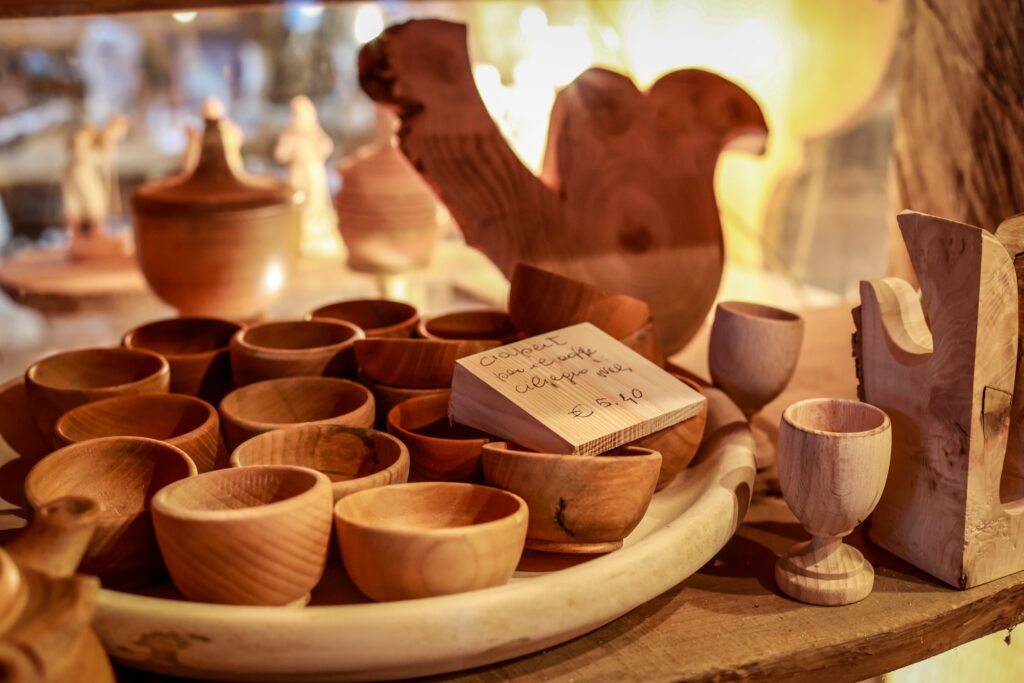It’s a wonderful day to enhance your knowledge about something you might be curious about – identifying if a product is handmade or created by a skilled artisan. This article is your guide in distinguishing true craftsmanship from mass production! Discover the distinct markers to look out for in your search. Here, you’ll untangle the mystique that shrouds handcrafted and artisan-made items and confidently claim your next gem for its authentic worth. Let’s embark on this exciting journey to the heart of craft and genuinity. Hang on tight, and let’s reveal the secrets together!
Defining Handcrafted and Artisan-Made Products
When you step into the world of beautifully handmade items, you stumble upon two important terms: “handcrafted” and “artisan-made”. Though often used interchangeably, these terms have nuanced differences that are important to understand.
Understanding the Term ‘Handcrafted’
A handcrafted product refers to an item that you can trace back to an individual or group’s skilled labor. This isn’t about mechanization or assembly lines, but about items created with care and attention each step of the way. No two handcrafted items are identical because each piece reflects the touches, twists, and turns made by an artisan’s hand.
Understanding the Term ‘Artisan-made’
The term “artisan-made” also implies a handmade process, but it further implies a level of expertise or artistry. An artisan applies time-honored methods, honed over years of experience, to produce each item. This term emphasizes the artisan skills involved in making each item and the tradition behind these skills.
Differences Between Handcrafted and Artisan-Made
Though there is a thin line distinguishing handcrafted and artisan-made products, the primary difference lies in the skill level involved. An item can be handcrafted without needing an artisan’s set of skills. On the other hand, artisan-made products are not only handmade; they require a certain level of mastery, finesse, and artistry, often passed down through generations.
Recognizing Handcrafted Products
Recognizing handcrafted products may seem daunting, but there are a few key features that often indicate an item is indeed handmade.
Physical Characteristics of Handcrafted Items
Handcrafted items often have unique characteristics that machines can’t replicate. These include subtle variations in color, texture, and shape. Even in a set of similar items, each piece has a unique personality, a story, characterized by the crafter’s hand.
Inconsistencies and Imperfections: The Mark of Handcrafting
In perusing handcrafted products, remember that inconsistencies and imperfections are not flaws but marks of authenticity. These minor deviations add to the charm and uniqueness of the products, setting them apart from mass-produced goods.
Labels and Certifications
Many crafters are proud to label their products as ‘handmade’ or ‘handcrafted,’ knowing that discerning consumers value the individual labor and creativity involved. Some may even include certifications to provide further assurances of their products’ handcrafted nature.

This image is property of images.unsplash.com.
Identifying Artisan-Made Products
Artisan-made products are a testament to the craftsman’s skills, traditional techniques, and innate artistic sensibility. But how do you identify these products?
Artisan Techniques and Skills
Identifying artisan-made products involves understanding the craftsman’s traditional methods and skills. This knowledge allows you to appreciate the intricate details, elaborate patterns, and intricate techniques borne out of years of expertise.
Distinctiveness of Artisan-Made Items
Artisan-made items reflect the craftsman’s creativity, passion, and personal style, making each item distinctive. These products stand out for their uniqueness, artistry, and the unmistakable mark of the individual or community that created them.
Certifications and Labels of Authenticity
Certifications and labels are important in the world of artisan goods as well. Look for labels indicating that a piece is artisan-made or for certifications from organizations that authenticate artisan-made products.
Questions to Ask Sellers or Producers
Asking sellers or producers about their products can provide valuable insights, helping you make an informed choice.
Production Process Enquiries
Ask about the product’s journey from raw material to finished item. Understanding the process can reveal whether the product is genuinely handcrafted or artisan-made.
Sustainability and Ethics Questions
Enquire about the materials used to craft the item. Where do they originate? Are they sustainably sourced? You might also ask about the working conditions of those who made the product. These answers can indicate the ethical standards the company upholds.
Provenance and History of Materials
Seek information about the provenance and history of the materials used. This could uncover interesting stories about the artisan’s heritage, the community’s traditions, or the sustainability efforts of the company.

This image is property of images.unsplash.com.
Researching Brands and Companies
Before investing in handcrafted or artisan-made products, thorough research of brands and companies is crucial.
Company’s Commitment to Handcrafting and Artisanal Work
Does the company value traditional methods and techniques? Do they prioritize craftsmanship over mass production? Answers to these questions ascertain the company’s commitment to the handcrafting and artisan process.
Utilizing Online Platforms for Information
Leverage the power of online platforms to learn about a brand or company. Most companies have social media pages or websites where they share stories about their products, artisans, and processes.
Checking Company’s Reviews and Ratings
Reviews and ratings by previous customers provide insights into product quality, customer satisfaction, and the company’s authenticity.
Understanding Labels and Certifications
We’ve spoken about labels and certifications, but let’s delve into why they’re so important.
Importance of Labels and Certifications
Labels and certifications serve as proof of authenticity. They assure you that the product was made following specific guidelines and meets certain standards, be it for handcrafting or artisan quality.
Common Labels and Certificates for Handcrafted and Artisan-Made Products
You may encounter various labels and certifications when shopping for handcrafted or artisan products. Some common ones include ‘Fair Trade’ and ‘Craftmark’. Understand what different labels mean and who issues them to decipher their reliability.
Understanding Fair Trade Certifications
Fair Trade certification is a commonly seen label on handcrafted and artisan-made products. Going beyond the realm of handcrafting, this certification ensures that the producers receive fair wages and work in decent conditions.

This image is property of images.unsplash.com.
The Impact of Price on Handmade and Artisan Items
Handcrafted and artisan-made items often have higher prices compared to mass-produced goods. But why is this so?
Why Handcrafted and Artisan-Made Products Are More Expensive
Handcrafted and artisan-made products are the fruit of someone’s time, effort, skill, and creativity. This justifies the higher cost. Additionally, the use of quality, sustainable materials, and fair-wage practices can also contribute to pricing.
The Value of Craftsmanship
The price of handcrafted and artisan-made items also reflects the value of the craftsmanship. Investment in these products means supporting individual craftsmen, preserving traditional artistry, and appreciating creativity.
Interpreting Price in Relation to Craftsmanship
Remember to interpret price in relation to craftsmanship. Higher prices often signal superior skills, materials, or techniques involved.
Fake vs. Genuine Handcrafted and Artisan-Made Products
Let’s delve into understanding how to distinguish between genuine and counterfeit handcrafted and artisan-made products.
Spotting Counterfeit Handcrafted and Artisan-Made Products
Counterfeit handcrafted and artisan-made products may have consistent finishes, lack artisan personality, or mirror mass-produced items. Watch out for suspiciously low prices as well.
Understanding Mass Production Impersonations
Mass production methods can impersonate handcrafting techniques, producing items that look handcrafted. However, these items lack unique characteristics, artisan techniques, and are often made from inferior materials.
The Role of Intellectual Property in Authenticating Products
Intellectual property rights protect artisans and their creations. If a product comes with a patent, copyright, or trademark, it can aid in verifying the authenticity of the product as handcrafted or artisan-made.
Sustainable and Ethically Produced Artisan and Handcrafted Products
A growing trend, particularly for handcrafted and artisan-made products, is a focus on sustainability and ethical production.
The Importance of Sustainability in Handcrafted and Artisan-made Products
Sustainable handcrafted and artisan-made goods not only impact the environment positively, but also foster respect for resources, tradition, and a slower, mindful way of life.
Indicators of Ethically Produced Handcrafted and Artisan-Made Goods
Look for cues indicating ethical production, such as sustainably sourced materials, fair trade practices, and artisan-friendly policies. Labels and certifications can also serve as helpful indicators.
Consumer Rights and Protection
Finally, as a consumer, it’s important to know your rights and how to protect yourself when purchasing handcrafted and artisan-made goods.
Your Rights as a Consumer when Buying Handcrafted and Artisan-Made Items
Understand your rights to a fair transaction, genuine products, and corrective measures if a product turns out to be counterfeit.
Where to Report Fraud or Misrepresentation
Know the proper authorities to report to, whether it be an industry regulatory body or your local consumer rights office, should you come across fraud or misrepresentation.
Steps for Retrieving Lost Money for Counterfeit Products
Learn the appropriate steps to retrieve lost money for counterfeit products, such as lodging a complaint, bringing a civil suit, or reporting to a consumer helpline.
With this comprehensive guide, you will be more equipped to navigate the realm of handcrafted and artisan-made goods with confidence. Happy shopping!

